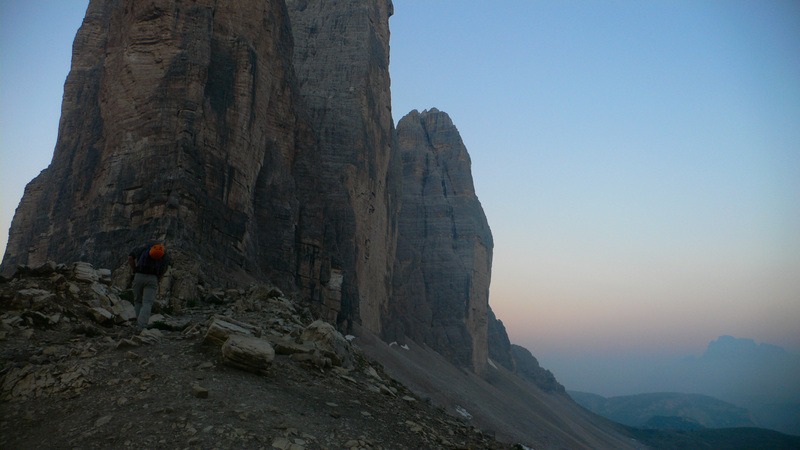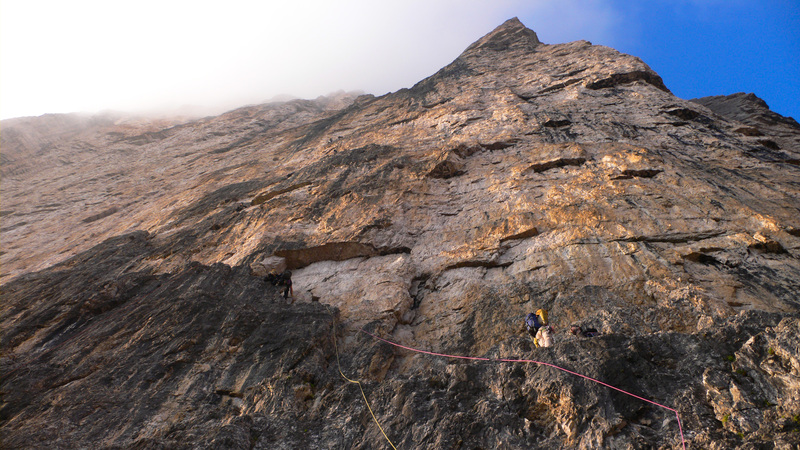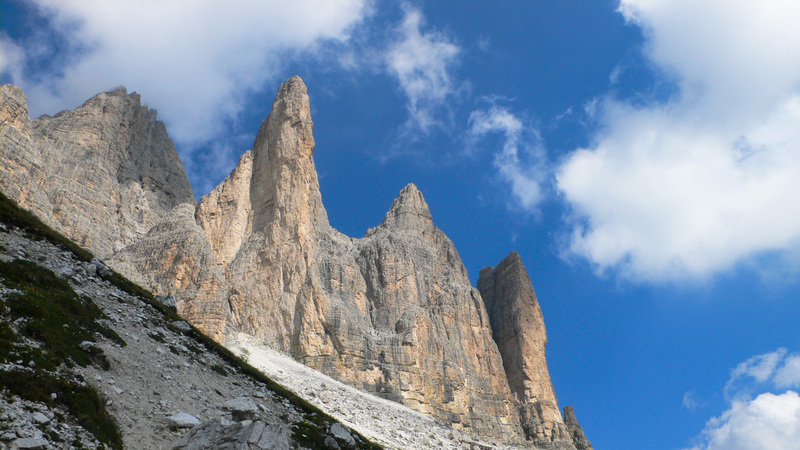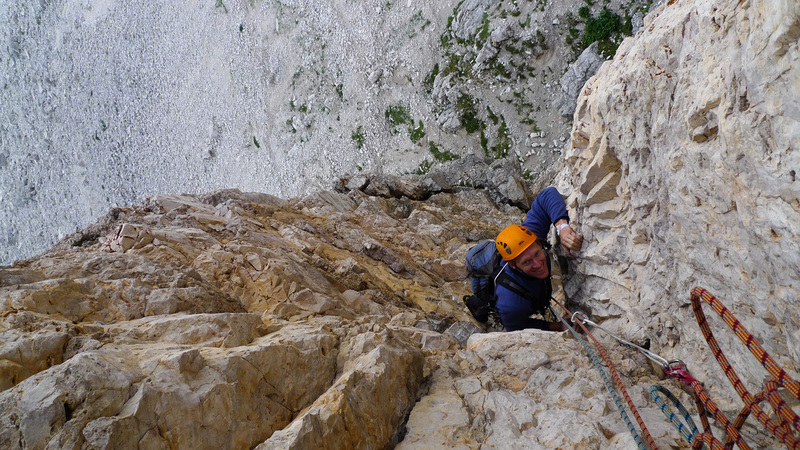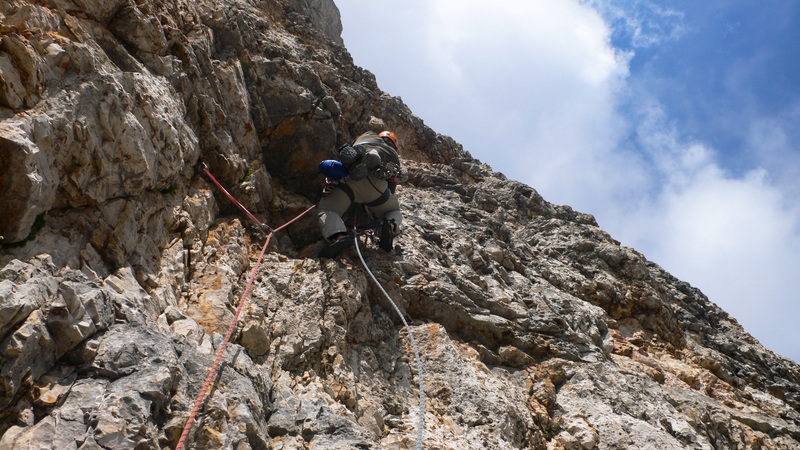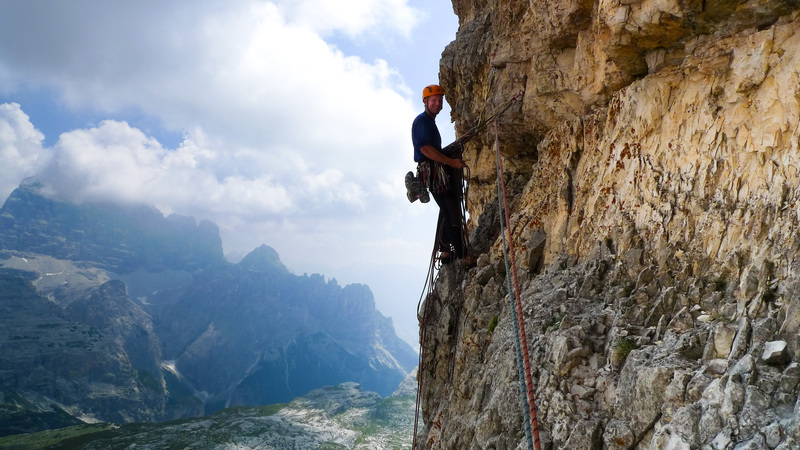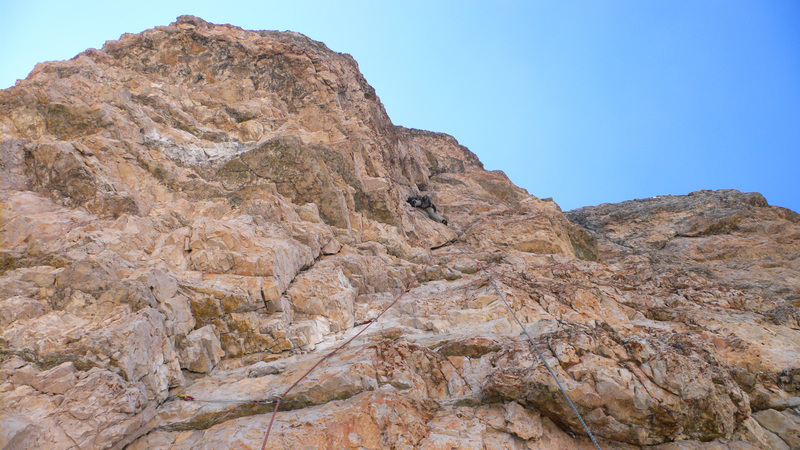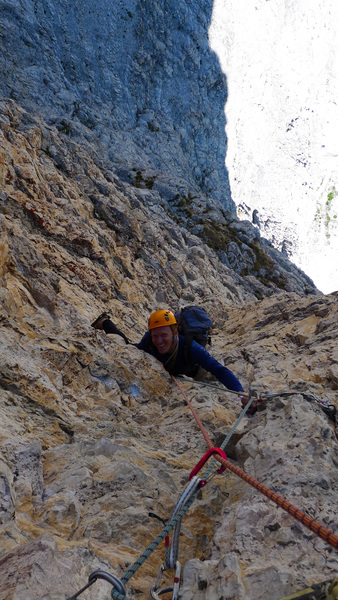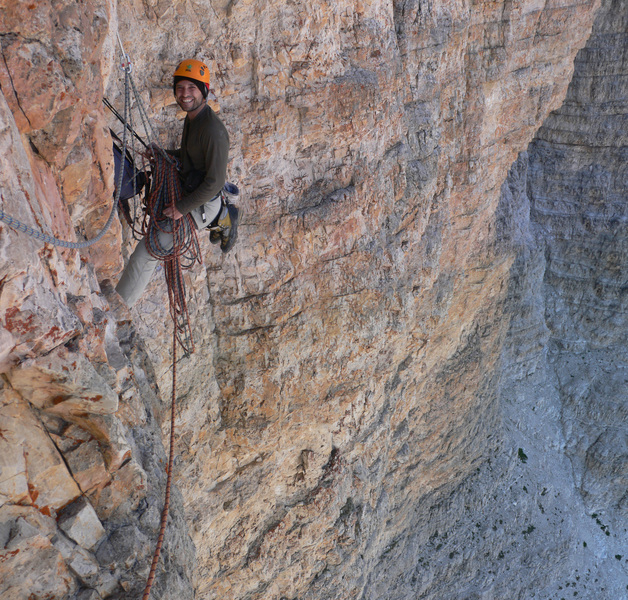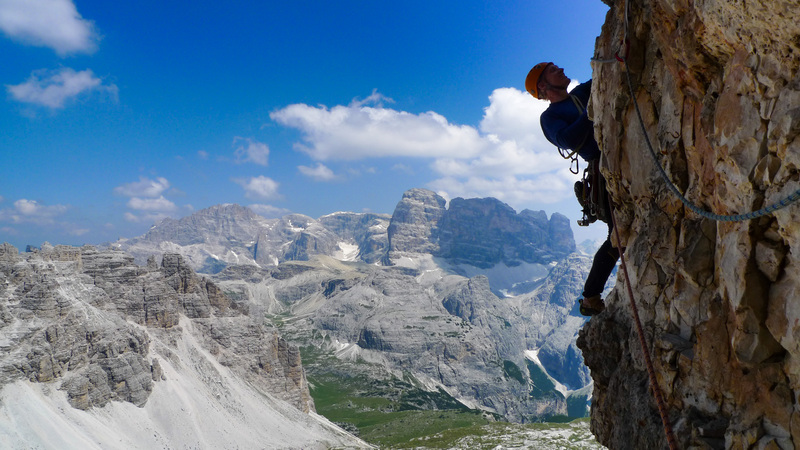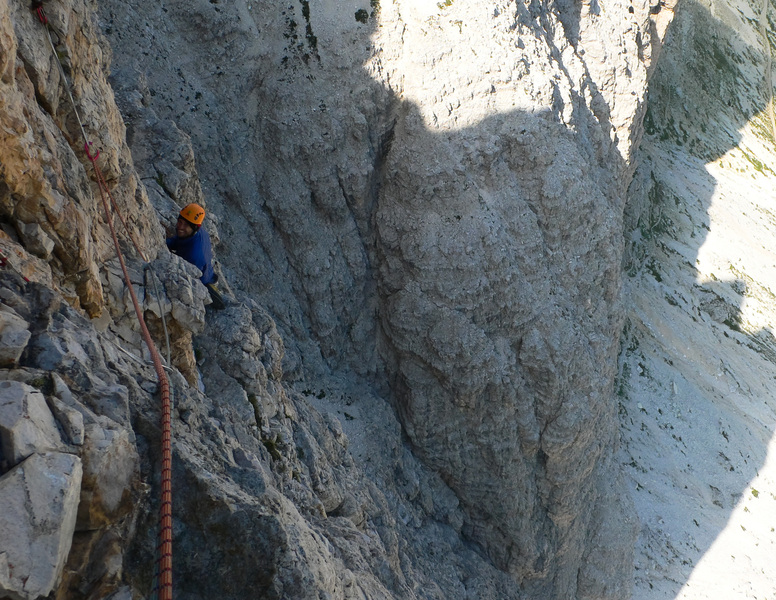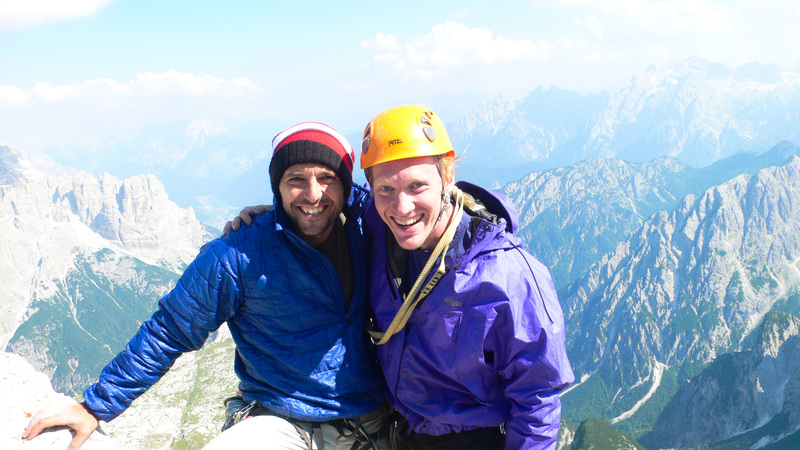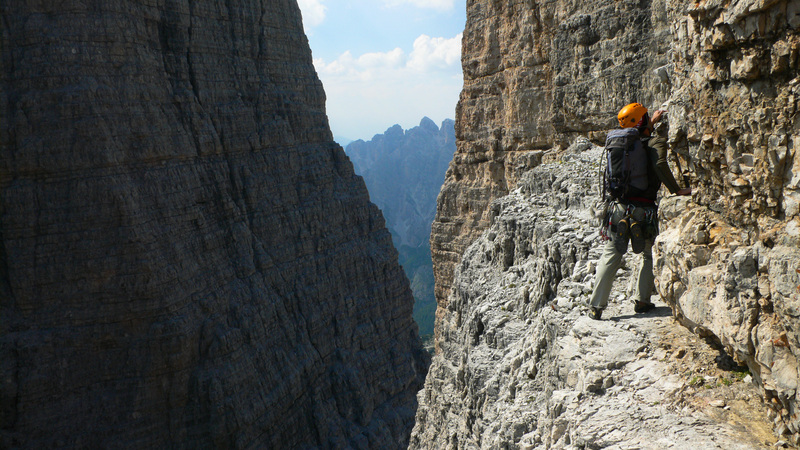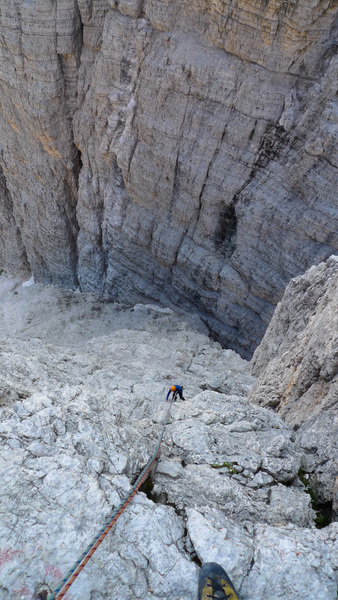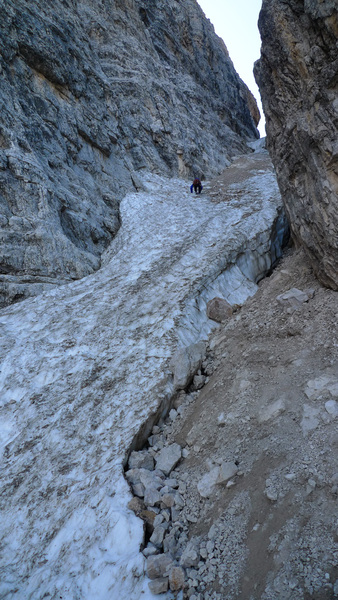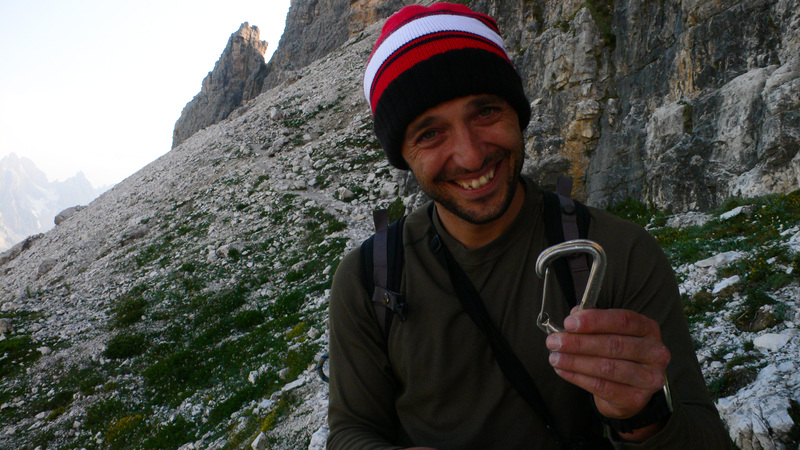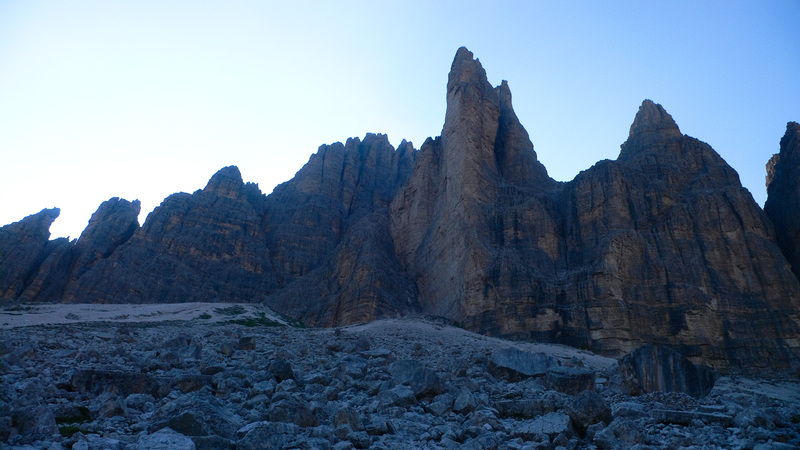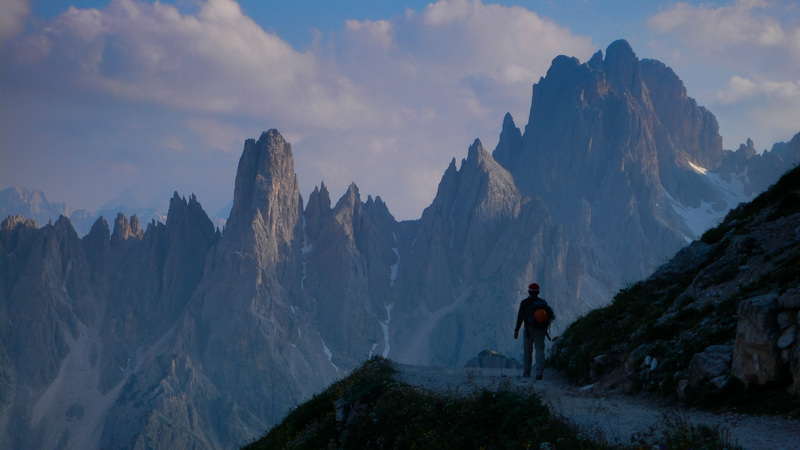Kleine Zinne, Yellow Edge (VI+)
Friends: JesseLocation: Drei Zinnen
Elevation gain: 0m = 0m
- Kleine Zinne, "Yellow Edge" (VI+, 14 pitches)
We slept in the Trevisio Hut and hiked down in the morning. Suddenly it was Thursday. We were running out of time! We wanted to do something "big," and finally a more stable weather pattern was supposed to arrive, or already be here. We thought about a variety of objectives, but finally settled on the Grosse Zinne (Cima Grande), via the Comici North Face. Friday would be the best weather forecast so far. We drove north, having lunch along the way somewhere. At Lake Misurina I grew so tired of driving (or being in the car) that I had to get out and read a few hours. I'd passed up an opportunity for gas in Cortina, and now realized I really needed it. We had to drive up to Dobbiaco for a station, some water and another forecast check. Eventually we were settled in the Rifugio Aronzo, all set to wake up early and climb.
In the morning everything went smoothly. We made the approach, and in the last few minutes two parties came running up behind us. One of them did another climb, but the other was pleased to set his foot at the base of the route a few seconds before me, feeling that he'd "claimed his place." Looking up, we saw the route was already crowded. This kind of sucked. Rather mad, I soloed the first pitch (easy, loose terrain) and brought Jesse up, ignoring this smug running fellow (turns out he's the "lead guide," Jesse saw his picture in the Aronzo hut). Later the running man threaded his rope through another party on the second pitch, pulling on their rope and tugging on the protection! (it was a nut that could easily fall out with such activity).
Jesse and I sat at our place in line at the top of the first pitch, realizing it would be at least 2 hours before we could move. Starting at pitch 3, the route is grade VII- for many pitches. So it's a very slow single file affair. There were even people hidden on a ledge above that we hadn't seen. And we were the last in line. We waited about 45 minutes, then climbed down, unwilling to sit there the whole morning.
Somewhat disgusted with the whole situation, and maybe ourselves for not having foreseen this particular difficulty, we stomped away and formed a new plan. I'd run back to the car and get the topo for "The Yellow Edge," then we'd climb that. I slipped twice on steep scree and cut my wrist enough to cover my hand and helmet in blood. An alarmed Jesse gave me some tape to wrap it up. No way I'm not climbing cuza that!
A strange fog rolled in, making my jog to the car and back monotonous. We humped up to the base of the route, really happy to see that there was only one party 3 pitches above.
Jesse got the first pitch (30 m), rather intimidating for it's V+ or VI- grade because the holds are small and polished. I continued for pitch 2, a VI or VI- crack with a brief but exciting overhanging section. The main problem there was feeling like your feet might blast off of a polished slope like ice. I felt every microscopic movement and torqued hard on the jams. Happily, polish doesn't disturb a good hand jam too much.
We were happy to be done with those pitches, often described as the real crux despite some VI+ moves higher up that are without polish. Now we followed four long pitches right of the crest, mostly on easy terrain with several lines available. We slavishly followed our topo, not wanting to miss the spot where we make a hard left traverse to reach the edge (doesn't make sense to call it a ridge...it's totally vertical the whole way). This short traverse was easy but thrillingly exposed. I led a very enjoyable face climb (V+) past some pitons right on the edge to a nice stance below the crux pitch.
I moved the belay from the one suggested on the topo so I could watch Jesse climb the pitch. He did a great job, passing a lower VI- section that had a short vertical wall but good hands in a crack. Then the real meat of the pitch came, in an overhanging yellow corner with good handholds but outrageous exposure (VI+). He beefed up the 3-piton belay with a cam and a sling, understandably nervous hanging way out in space, nothing but air around, and people with binoculars watching him from the Lavaredo Hut. This was a joyous pitch to climb. It felt very well protected (if you trust pitons :)), and the moves were athletic but secure. Between this and the next pitch, another thrilling traverse followed by 20 meters of steep face climbing (V+), this route became elevated to something mythic. Two more pitches of incredibly exposed face climbing had us laughing and continuously amazed at the greatness of this climb.
A final "ordinary" pitch, because it was somewhat sheltered from the exposure we'd grown to love, and then we stood at the top of the "edge." I was so impressed with the climb, I didn't even think about going on to the true summit of the Kleine Zinne (not hard), only now I wish I had. But if there is one climb to repeat in a lifetime, it's this one, for sure.
We scrambled ledges to a point above the notch between the Kleine and Grosse Zinne. We made two double rope rappels then several single rope rappels to reach the notch, then descended unpleasant hard, dirty snow for quite a while. Eventually, very muddy and with frozen fingers (and me with some blood from my wound), we escaped the gully and retrieved our pack at the base of the climb.
We'd salvaged the day really well. Holy cow, that was fun!
Funny story with the photo above. We'd dropped this carabiner on pitch 10, and found it laying on the trail right below the wall. Woo hoo! Aluminum doesn't have a hairline crack problem, so we think it's okay to use again.
Goodbye Yellow Edge. I think I'll climb you again in this life!
